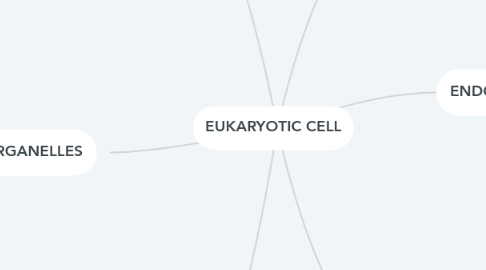
1. MICROBODIES & VACUOLES
1.1. PEROXISOME
1.1.1. vesicle that is involved in fatty acid
2. ENERGY-RELATED ORGANELLES
2.1. MITOCHONDRIA
2.1.1. nearly all eukaryotic cells, certainly all plant and algae cells in addition to aniaml cells, contain mitochondria
2.1.2. produce most of the ATP utilized by the cell
2.1.3. have two membranes , the outer membrane and the inner membrane
2.1.4. the inner membrane is highly convulated into folds called cristae that project into the matrix
2.1.5. the outer membrane encloses a semifluid matrix, which contains mitochondrial DNA and ribosomes
2.2. CHLOROPLAST
2.2.1. twice as wide and as much as five times the length of a mitocondrion
2.2.2. have a three-membrane system
2.2.2.1. the stroma is a semifluid region that is enclosed by double membrane
2.2.2.2. enzymes and thylakoids, dislike sacs are formed from a third chloroplast membrane
2.2.3. chloroplast is a type of plastid that are plants organells that are surrounded by double membrane and have varied functions
2.2.4. surrounded by a double membrane, which includes an outer membrane and the inner membrane
2.2.4.1. one membrane is derived from the vesicle that brought the prokaryote into the cell
2.2.4.2. inner membrane is derived from the prokaryote
2.2.5. the endosymbiotic theory holds that chloroplasts are derived from a photosynthesis bacterium that was engulfed in a eukaryotic cell
3. CYTOSKELETON
4. NUCLEUS AND RIBOSOMES
4.1. NUCLEAR ENVELOPE
4.1.1. double membrane with nuclear pores that encloses nucleus
4.2. NUCLEAR PORE
4.2.1. permits passage of proteins into nucleus and ribosomal subunits out of nucleus
4.3. NUCLEOLUS
4.3.1. produces subunits of ribosomes
4.4. CHROMATIN
4.4.1. diffuse threads containing DNA and protein
5. ENDOMEMBRANE SYSTEM
5.1. NUCLEAR ENVELOPE
5.1.1. double membrane with nuclear pores that encloses nucleus
5.2. GOLGI APPARATUS
5.2.1. processes,packages, and secretes modified proteins
5.3. MEMBRANE OF ER
5.3.1. protein and lipid metabolism
5.4. VESICLES
5.4.1. transport materials between organelles of system
6. OTHERS
6.1. CENTRIOLE
6.1.1. short cylinders of microtubules
6.1.2. centrioles replicate before an animal cell divides
6.2. CILIA
6.2.1. hairlike projections that can move either in an underlating fashion, like a whip, or stiffly, like an oar.
6.2.2. move the cell through liquid
6.2.3. for example: paramecia are organism that move by means of cilia
6.3. FLAGELLA
6.3.1. hairlike projections that can move either in an underlating fashion, like a whip, or stiffly, like an oar.
6.3.2. move the cell through liquid
6.3.3. sperm cells move by means of flagella
